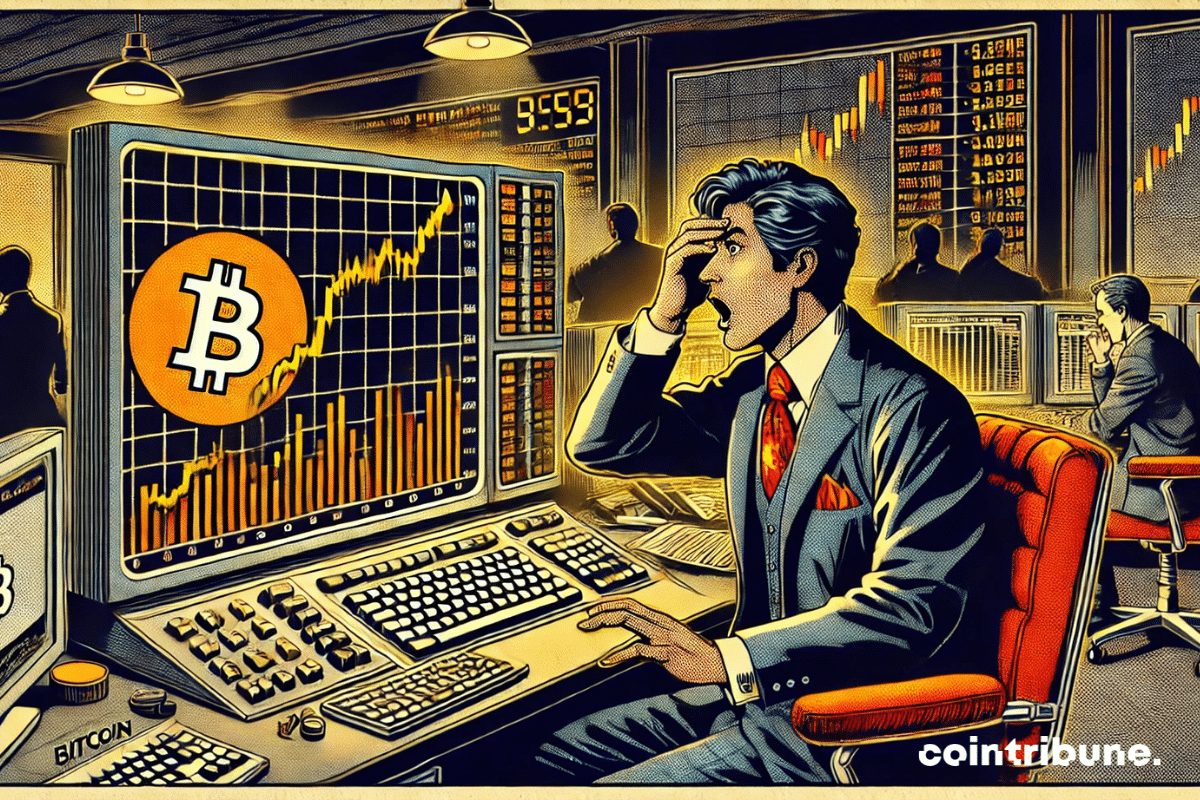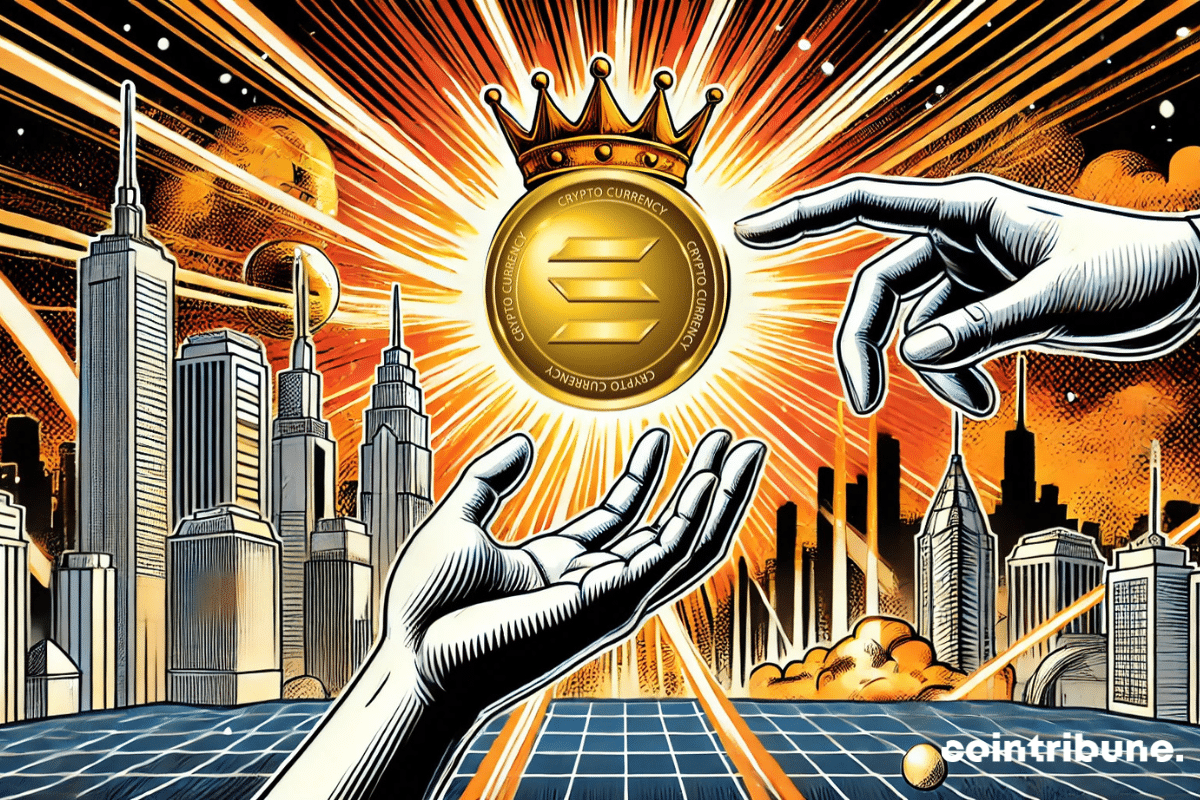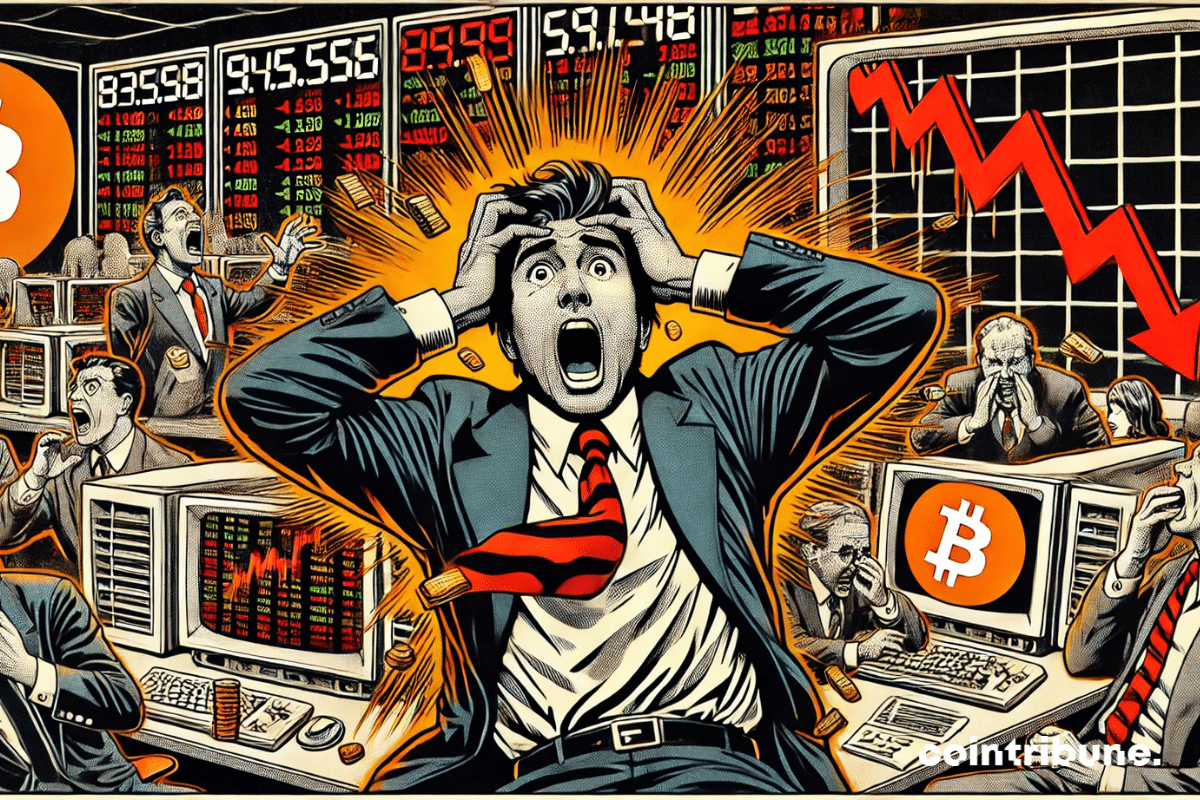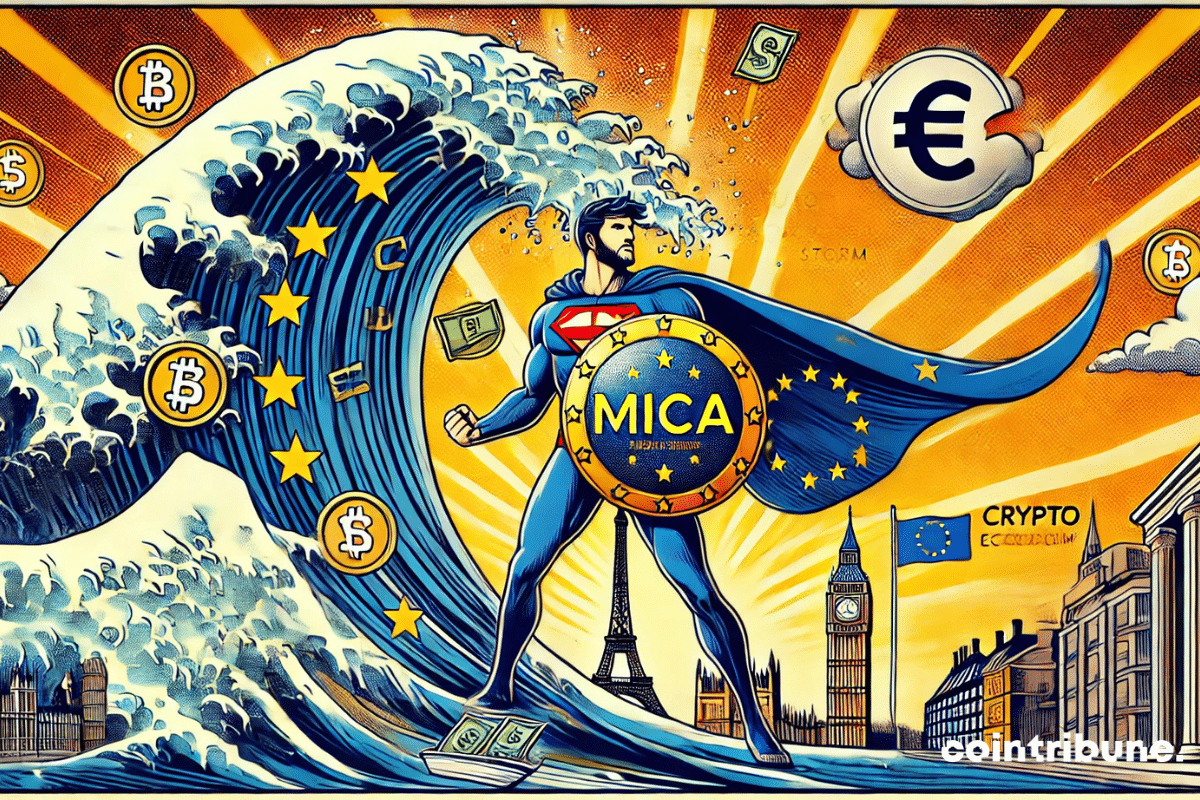Bitcoin is facing a new setback, shaken by a market that is reevaluating its expectations. Indeed, the publication of a solid economic report in the United States has strengthened the dollar, which reduces the likelihood of an imminent interest rate cut by the Federal Reserve. Such a reaction has led to a correction below $93,000. This has temporarily stalled the bullish momentum of crypto. However, Grayscale remains confident and views this pullback as mere turbulence rather than a reversal of trend. According to Zach Pandl, head of research at the company, the strength of the dollar and the restrictive monetary policy are temporarily weighing on the market, but the fundamentals of Bitcoin remain strong. With rising institutional adoption and a changing regulatory environment, the bullish trajectory seems intact despite short-term fluctuations.
Crypto News
The French debt today raises significant concerns. The surge in the ten-year rate, which recently came close to 3.4%, illustrates the colossal challenges the government is facing. On one side, the Minister of Economy, Éric Lombard, must deal with a rapidly increasing interest burden. On the other hand, the risk premium, nearing 90 basis points, serves as a reminder that the gap is gradually widening with Germany and dangerously approaching Italy.
A new era seems to be opening up for American financial advisors. According to a recent survey conducted by Bitwise, 56% of them say they are more inclined to invest in cryptocurrencies after Donald Trump's victory. Such enthusiasm is as intriguing as it is fascinating, especially when we know that crypto markets evolve at lightning speed. Some professionals see it as a favorable wind, ready to propel traditional finance towards new horizons. Others, more cautious, detect a landscape still riddled with uncertainties. However, one thing is certain: the dynamics around Bitcoin and other digital assets continue to strengthen.
The Cardano blockchain and the legendary football club FC Barcelona have just officially announced a strategic partnership aimed at transforming the fan experience. This historic alliance between blockchain technology and one of the largest football clubs in the world promises to redefine fan engagement through innovative Web3 initiatives.
Under the heavy clouds of declining Funding Rates, Ethereum is clinging to the $3,000 mark. A correction looms, and hope wavers. In this tumult, altcoins are also trembling.
Raoul Pal, CEO of Real Vision, announces a new explosive phase in the altcoin market that he calls "banana singularity," characterized by a widespread increase in prices. This prediction comes as Bitcoin consolidates around $93,000 after having crossed the $100,000 mark in early January.
Ripple slides, XRP wavers. Between broken hopes and chilling figures, 36 million dollars flirt with the abyss.
Below $92,000, Bitcoin wavers, and the Fear & Greed index, like a nervous barometer, shifts from vertigo to apathy.
Despite regulatory restrictions, Asia is emerging as the global epicenter of crypto, capturing 60% of users worldwide. A recent study by Foresight Ventures and Primitive reveals that the Asian continent generates the largest share of global liquidity, with five Asian countries ranking in the top 10 of the global crypto adoption index in 2024.
Crypto industry experts doubt Trump’s commitment to keep all his promises: "It is clear that the Republican Party has relied on a pro-crypto political position to gather votes from citizens holding crypto assets." And what about bitcoin… what will become of it?
Investors are closely monitoring XRP, an altcoin that has already experienced a spectacular surge. Its recent consolidation suggests a possible violent move, especially if technical indicators continue to point towards a breakout above the current resistance. Beyond simple price fluctuations, optimism is growing regarding a potential breakthrough above $2.90.
After Bitcoin dropped to $92,000 on January 9, 2025, the question on everyone's lips was: Is the Bitcoin Bull Run coming to an end? Analysts have examined the issue and present 3 factors that prove the BTC rally is far from over.
The year 2025 could very well start with a bang for Bitcoin, thanks to a massive injection of liquidity from the FED, which could propel BTC to a new ATH in March 2025.
The IMF, like a perplexed teacher, advises Kenya to abandon its old recipes for a fresher and more digestible crypto-regulation, not forgetting to eliminate the scammers from the menu.
Dogecoin is experiencing a significant slowdown, marked by a decrease in investor interest and a decline in activity on social media. This trend contrasts with the past euphoria surrounding this cryptocurrency that originated from a simple meme. According to data from Santiment, enthusiasm for DOGE has reached a historically low level, reflecting a gradual loss of market confidence. The drop in investor sentiment, combined with a significant reduction in online discussions, highlights a climate of wait-and-see where caution seems to prevail over speculation. However, this weakening is not universally accepted. Some observers see it as a typical market dip, conducive to a future recovery. In their view, this lull could represent a strategic buying opportunity for investors willing to bet on a potential rebound, provided the overall market regains an upward momentum.
The crypto SOL could see a significant increase in 2025, driven by the anticipation of spot ETFs in the United States and the growing interest of retail investors, according to analysts. Despite a recent correction below $200, Solana's fundamentals remain strong.
On January 7, Canadian politics experienced a seismic shift: Justin Trudeau, in power since 2015, announced his resignation following the abrupt departure of his Finance Minister, Chrystia Freeland. Since then, all eyes have turned to Pierre Poilievre, the leader of the Conservative Party, whose popularity is skyrocketing as the October 20 elections approach. Among his supporters, a billionaire has caused a stir: Elon Musk, the iconic CEO of Tesla and SpaceX, praised his statements on inflation and fiscal responsibility.
The year 2025 begins under the sign of instability for the crypto market. After briefly exceeding the symbolic threshold of 100,000 dollars on January 7, Bitcoin experienced a dramatic reversal, falling to 92,500 dollars in just a few hours. This sudden decline cannot be explained by a technical factor but rather by major macroeconomic elements. Investors are closely monitoring the monetary policy of the U.S. Federal Reserve (Fed), whose decisions directly influence financial markets. So far, many had anticipated a drop in interest rates as early as the first quarter of 2025. However, the latest economic data in the United States indicate stronger-than-expected growth, which challenges this assumption. As a result, markets are reassessing their expectations and adjusting their positions. This uncertainty has triggered a wave of liquidations that has contributed to Bitcoin's decline.
As the U.S. dollar index (DXY) reaches new highs, bitcoin struggles to maintain its critical support. Investors are closely watching the movements of the DXY and the monetary policies of the Federal Reserve, anticipating a short-term target of $80,000 for the queen of crypto.
Fidelity Digital Assets predicts massive adoption of Bitcoin by nation-states in 2025. Discover the analyses and forecasts.
The year 2025 could mark a turning point for Ether (ETH), the second largest cryptocurrency by market capitalization. According to Dr. Sean Dawson, head of research at Derive, Ether could reach a peak of $12,000 this year, thanks to Trump, representing a 257% increase from its current price.
Bitcoin is facing significant downward pressure as markets react to uncertainties in U.S. politics. A sharp drop of $5,000 in a single day suggests a possible test of $88,000 in the coming weeks, according to analysts.
The world of crypto is evolving at a dizzying pace. Even the most promising collaborations do not always guarantee an immediate price increase. This is exactly what we observe with Ripple and Chainlink, whose partnership has not prevented their tokens, XRP and LINK, from suddenly retreating.
Amidst the swirling background of stablecoins, Ripple orchestrates a symphony of boldness: RLUSD, millions issued, solidified reserves, and vague promises... A storm in the crypto world, and this is just the beginning.
Financial markets have been shaken by a wave of tension, causing a sharp correction in bitcoin (BTC) and major altcoins. In just a few hours, the flagship crypto fell below the critical threshold of $100,000, while Ethereum (ETH) collapsed below $3,400. This pullback occurs against a backdrop of deteriorating global economic conditions. Several factors explain this storm in the crypto market: on the one hand, the rise in U.S. Treasury yields, and on the other, the monetary policy of the U.S. Federal Reserve (Fed) continues to weigh heavily on market confidence. Meanwhile, the global economic environment remains marked by additional stress factors. In light of these disturbances, the crypto market is undergoing a period of high volatility, where investor caution is mingled with panic movements. This correction now raises the question of a potential short-term rebound or a continuation of the bearish trend due to an uncertain macroeconomic environment.
Bitcoin is gaining ground around the world. However, the idea of seeing this cryptocurrency appear in the vaults of a central bank may seem crazy. Yet, it is the scenario mentioned by Aleš Michl, the governor of the Czech National Bank, who is considering diversifying its reserves with Bitcoin. Why such boldness? Let's find out.
At the beginning of 2025, Cardano (ADA) is attracting the attention of investors due to a bullish sentiment and increased network activity. Discover how these factors could propel the price of ADA to new highs and what this means for crypto traders and investors.
At the heart of the old continent, the European Union is taking a decisive step towards the crypto future. The long-awaited implementation of the MiCA regulatory framework brings a breath of fresh air to the crypto industry. Stakeholders in the sector welcome this progress, while fearing possible administrative overreach. Yet, despite these legitimate concerns, optimism remains. Institutional investors are preparing to inject fresh capital. At the same time, governments are refining their surveillance strategies. The tension is palpable, but MiCA promises, in the long term, to solidify the rise of cryptocurrencies in Europe.
Bitcoin continues to ignite passions. Just yesterday, crossing the $100,000 mark seemed like a utopia, yet the flagship crypto once again proves that it has not finished surprising us. While some traders are now considering a target around $138,000, others highlight an unexpected return of the "Coinbase premium" to a neutral level. Should we see this as the beginning of a new surge or simply a respite before the storm?
Since January 2023, the crypto market has been experiencing a bullish phase marked by a significant appreciation of Bitcoin and altcoins. This dynamic is based on several factors, including accelerating institutional adoption, a massive influx of capital, and an overall optimistic market sentiment. Additionally, there are anticipations surrounding the approval of new crypto ETFs and potential favorable regulations that boost investor confidence. However, according to CryptoQuant, this euphoria could soon reach a critical point. The analytics firm identifies several technical signals indicating that the market has entered its final phase. Among these is the significant increase in the volume of Bitcoin traded over the past month, which reached 36% in the fourth quarter of 2024. This phenomenon, observed during previous market peaks, suggests a possible correction in the short to medium term. Yet, this warning is not unanimously accepted. Institutions such as Steno Research and VanEck adopt a more optimistic view. According to them, the bullish trend could continue until the end of 2025, driven by increasing adoption and evolving regulatory frameworks. VanEck even estimates that Bitcoin could reach $180,000, while Ethereum may exceed $6,000 by the end of next year. In light of these divergent forecasts, a question arises: should investors expect new price spikes or, on the contrary, take their profits before a possible market reversal?





























